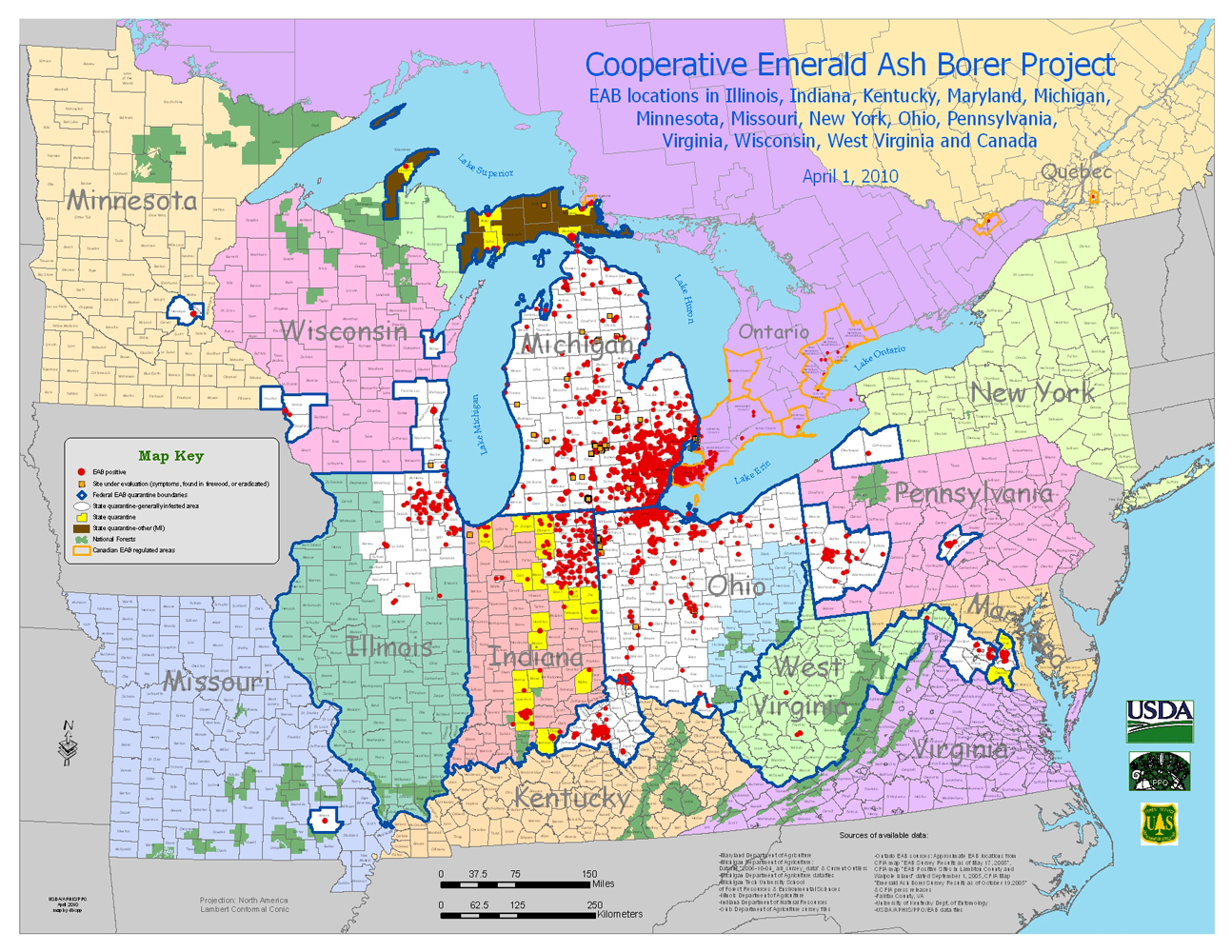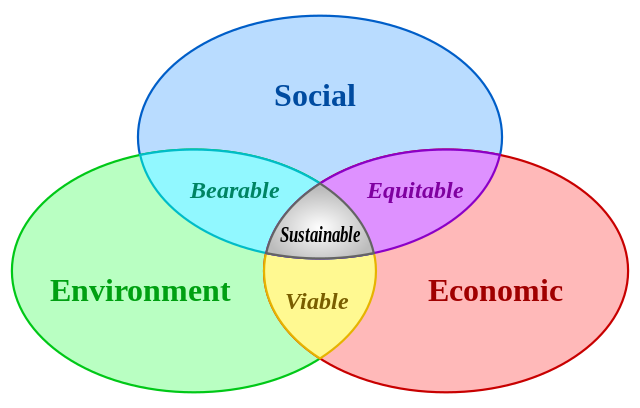
Sunday, December 26, 2010
Tuesday, December 14, 2010
Pellston, Michigan 2010 Climate

The average yearly data were obtained from NOAA's climatology servers and this year (or any year's) values were from NOAA's climate data online service. Choose Surface Data, Global Summary, then Country: USA, then choose a state and finally a station and year range.
UPDATE: In 2016, the New York Times implemented this visualization.
Friday, December 10, 2010
Pharmaceutical names
Pharmaceutical brand names are designed to connote meaning, while generic names are designed to denote specific chemical structures. For example, brand names often use linguistic tricks, such as plosive letters (P, T or D) to convey power, or fricative letters (X, F, S or Z) to imply speed. The FDA's Office of Postmarketing Drug Risk Assessment does not allow brand names that sound too much like what they are supposed to do, or sound too much like other drugs. Generic (nonproprietary) pharmaceutical names are assigned by the United States Adopted Name Council to denote the chemical structure of the compound. Examples include drugs that end with -mab, which stands for monoclonal antibody, and drugs that end with -tocin, which are oxytoxin derivatives.
Medical Decision-Making
Others have pointed out that this is a system of misaligned incentives can lead to situations where, for example, insurance companies would be much more worried about over-prescribing rather than under-prescribing treatment. So how do insurance companies do this in practice? By conducting a scientific review of all published literature on a given treatment, and then evaluating it. For example, Aetna's Clinical Policy Bulletins lay down the law of what is, and isn't accepted medical diagnosis and treatment.
Thursday, December 02, 2010
Presentations about Presentations
 The site is also a great place to store presentations in the cloud.
The site is also a great place to store presentations in the cloud.
Malaria vector population ranges
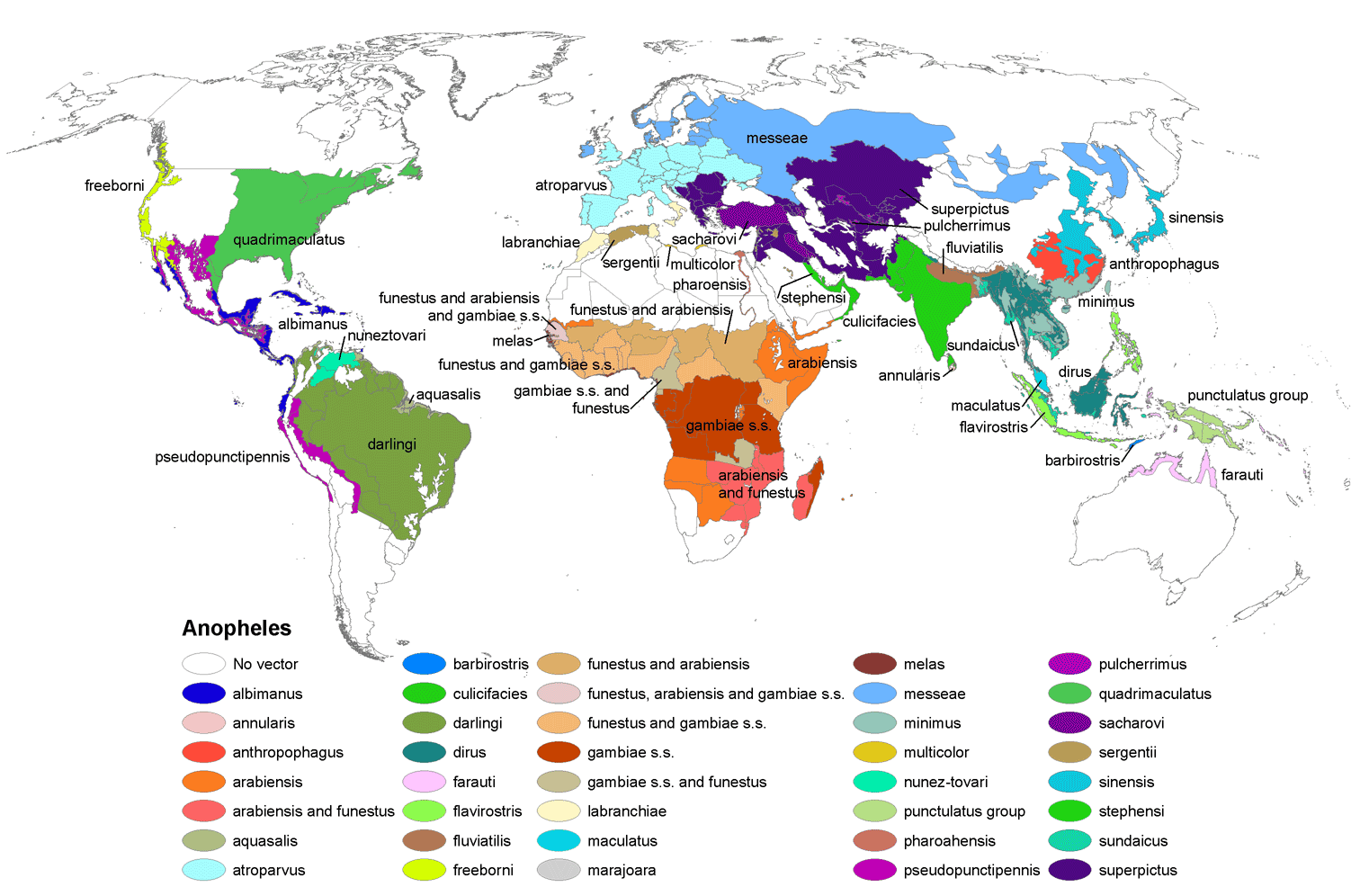
This map shows the current distribution of the species in the genus Anopheles, the vector for malaria. While malaria has been eradicated from many regions of the world, the vector has not, leaving the potential for malaria resurgence in the absence of vigilant public health campaigns. This map also shows why global warming will probably not expand the range of malaria: malaria is not constrained by the range of its mosquito vector. Pesticide campaigns to eradicate Anopheles mosquitoes are not the best way to control malaria. Instead, intervening in the transmission of malaria is the most effective approach.
The equation for the transmission of malaria is
R = (ma^2bp^n) / -r ln(p)
where R is the virulence of malaria, defined as the number of infections subsequent to an initial infection. If R is greater than 1, malarial incidence will increase; if R is less than 1 malaria will not be sustained in the human population.
m is the ratio of mosquitoes to people (# mosquitoes/ # humans)
a is the number of people bitten by a single mosquito per day
b is the proportion of infectious bites
r is the recovery rate (how long malarial parasites remain in the human)
n is the intrinsic incubation period for malaria in mosquitoes. Usually, malaria needs to incubate in mosquitoes for 10-14 days before that mosquito can transmit the infection
p is the daily probability of survival for a mosquito
Tuesday, November 30, 2010
Friday, November 26, 2010
Warm Arctic --> Cold Continents

Earth Observatory:stratosphere influences winter weather
Wunderground: winter La Nina forecast
NOAA Arctic "Report Card"
"There is evidence that the effect of higher air temperatures in the lower Arctic atmosphere in fall is contributing to changes in the atmospheric circulation in both the Arctic and northern mid-latitudes. Winter 2009-2010 showed a new connectivity between mid-latitude extreme cold and snowy weather events and changes in the wind patterns of the Arctic; the so-called Warm Arctic-Cold Continents pattern."
Paleorecord of arctic warming indicates these conditions are unprecedented in at least the last few thousand years. For more information on climate change-linked weather anomalies, check out the 2010 drought in the Amazon.
"Biodemography of human ageing"
 "Humans will continue to suffer senescence -- but the process is not intractable. Mortality has been postponed considerably as a result not of revolutionary advances in slowing the process of ageing but of ongoing progress in improving health. If progress in reducing mortality continues at the same pace....then in countries with high life expectancies most children born since the year 2000 will celebrate their 100th birthday -- in the twenty-second century. "
"Humans will continue to suffer senescence -- but the process is not intractable. Mortality has been postponed considerably as a result not of revolutionary advances in slowing the process of ageing but of ongoing progress in improving health. If progress in reducing mortality continues at the same pace....then in countries with high life expectancies most children born since the year 2000 will celebrate their 100th birthday -- in the twenty-second century. "
"Brawling Over Mammography"
"Two views of our planet's future"
 ILLUSTRATIONS BY MAXWELL HOLYOKE-HIRSCH
ILLUSTRATIONS BY MAXWELL HOLYOKE-HIRSCHNature article by Dr. David Orr, (Oberlin College) in this April 28 2010 review of books written by Stewart Brand and Bill McKibben. Each book advocates societal responses to anthropogenic climate change, with Stewart Brand advocating technological solutions and Bill McKibben advocating local interventions. Dr. Orr has also written his own book on solutions, entitled Down to the Wire: Confronting Climate Collapse.
The article is well written and the even the comments section contains interesting citations by volunteers.
Amino-acid imbalance explains extension of lifespan by dietary restriction in Drosophila

This paper in Nature, December 31, 2009 disproves the theory of resource allocation in which "high survival, associated with dietary restrictino, and high reproductive rate, associated with full feeding, are mutally exclusive." The authors show that different combinations of amino acids are responsible for longevity and fecundity, and that both can occur when either methionine is the only amino acid in the diet or when methionine is excluded from an otherwise normal diet. Therefore, the standard tradeoff observed between allocating resources to repair or growth is based on a nutritional sensing and signalling pathway that must involve methionine.
The authors go on to show that this pathway is the insulin sugar-sensing pathway by knocking out insulin receptors in Drosophila. In the figure above flies expressing a dominant negative called lnRDN (diamonds) live much longer, regardless of diet, than do wildtype (triangles) and control with a deGAL4 promoter (squares). Whether these findings apply to humans could possibly be answered with population nutritional and health data, but these can be hard to access.
Very well written.
Wednesday, November 17, 2010
Monday, November 15, 2010
Toxic Bodies by Nancy Langston
 "Toxic Bodies: Hormone Disruptors and the Legacy of DES" explores why our environment has become saturated with synthetic chemicals that disrupt hormones, and asks what we can do to protect human and environmental health. In this thorough undertaking, Environmental Historian Nancy Langston examines endocrine disruptors as a case study of environmental risk assessment and response. Interesting to compare this book's stance on weight-of-evidence to Our Stolen Future or The Secret History of the War on Cancer by Devra Davis. Compare that to a more formal report by the American Institute for Cancer Research.
"Toxic Bodies: Hormone Disruptors and the Legacy of DES" explores why our environment has become saturated with synthetic chemicals that disrupt hormones, and asks what we can do to protect human and environmental health. In this thorough undertaking, Environmental Historian Nancy Langston examines endocrine disruptors as a case study of environmental risk assessment and response. Interesting to compare this book's stance on weight-of-evidence to Our Stolen Future or The Secret History of the War on Cancer by Devra Davis. Compare that to a more formal report by the American Institute for Cancer Research.
 The Human Immune System is an extremely sophisticated chemical signaling systems, with the capacity to produce almost unlimited variability within a homeostatic regulatory framework that is just being glimpsed. Innate and acquired immunity are mediated by a large number of systems and subsystems, including the complement system, chemokines, cytokines, lipid-signalling molecules, etc. Inflammation, the process of capillary dilation, smooth muscle contraction, and recruitment of immune cells, utilizes seven major pathways.
The Human Immune System is an extremely sophisticated chemical signaling systems, with the capacity to produce almost unlimited variability within a homeostatic regulatory framework that is just being glimpsed. Innate and acquired immunity are mediated by a large number of systems and subsystems, including the complement system, chemokines, cytokines, lipid-signalling molecules, etc. Inflammation, the process of capillary dilation, smooth muscle contraction, and recruitment of immune cells, utilizes seven major pathways.Cellular and Plasma Inflammation Mediators:

Plasma Inflammation Mediators

COX/LOX Lipid Inflammation Pathway


"It is unclear to what extent the nature of an inflammatory trigger dictates the type of mediator induced. In addition, many (but not all) mediators not only have direct effects on target tissues but also themselves induce the production of additional mediators.
It will be important to understand the logic underlying this hierarchy of mediators."(Medzhitov, 2008)
Seven types of Inflammation Mediators (Medzhitov, 2008):
1. Vasoconstrictive amines: histamine, serotonin
2. Vasoactive Peptides: Substance P, etc
3. Complement Fragments: C3a, C4a, C5a
4. Lipid Mediators: eicosanoids,
5. Cytokines: TNF, IL-1, IL-6, etc
6. Chemokines
7. Proteolytic enzymes
1. Baroody FM, Naclerio RM. Antiallergic effects of H1-receptor antagonists. Allergy. 2000;55(s64):17-27.
2. Holgate ST, Broide D. New targets for allergic rhinitis a disease of civilization. Nat Rev Drug Discov. 2003 November;2(11):903-915.
3. Medzhitov R. Origin and physiological roles of inflammation. Nature. 2008 July 24;454(7203):428-435.
Vital Water and Homeostasis
 1. Comparing Oxidative-Reductive Potential (ORP) and pH of various foods and drinks to human body fluids, Okouchi et al (2002). 2. The idea of renal net acid excretion (RAE) indicates that homeostasis in animals is mainained against the intake of heterogeneous substances.
1. Comparing Oxidative-Reductive Potential (ORP) and pH of various foods and drinks to human body fluids, Okouchi et al (2002). 2. The idea of renal net acid excretion (RAE) indicates that homeostasis in animals is mainained against the intake of heterogeneous substances.1. Okouchi S, Suzuki M, Sugano K, Kagamimori S, Ikeda S. Water Desirable for the Human Body in Terms of Oxidation-Reduction Potential (ORP) to pH Relationship. Journal of Food Science. 2002;67(5):1594-1598.
2. Remer T. Influence of nutrition on acid-base balance--metabolic aspects. European Journal of Nutrition. 2001 October;40(5):214-220.
Saturday, November 13, 2010
Friday, November 12, 2010
Wednesday, November 10, 2010
A Question of Trust
Wednesday, November 03, 2010
Accountability, Transparency, Scientists and Government
In 1998 Congress broadened the Freedom of Information Act (FOIA) to specify that all government funded science should be shared and freely available to the public. Dr. Sheila Jasanoff, a professor of Science, Technology, and Policy at Harvard University, has recently written an excellent primer in the May 7 2010 issue of Science on her perspective of how climate science measures up; "Policy Forum: Science and Society: Testing Time for Climate Science."
She describes the "Three-Body Problem" as consisting of individuals, reliable bodies of knowledge, and procedures. The individual scientist or expert must be held to high standards of honesty and integrity. In science, peer review partly serves this purpose. Reliable bodies of knowledge create scientific knowledge. Scientific advisory committees translate scientific findings into policy-relevant forms: individual members' impartiality and sound judgment is critical. Under the Federal Advisory Committee Act (FACA) (Public Law 92–463), scientific advisory committees must be fairly balanced and, in the absence of special circumstances, committee meetings and records are presumed to be open to the public.
science policy blogs
http://bigthink.com/blogs/age-of-engagement
http://climateprogress.org/2010/04/28/im-speaking-at-harvard-friday-on-science-blogging/
Sunday, October 31, 2010
Intensive farming may ease climate change
This Nature News item reviews a paper published by Burney et al in PNAS entitled "Greenhouse gas mitigation by agricultural intensification." The article shows that agriculture today is more land-efficient than in 1960. Yet it has been interpreted to say that modern intensive industrial agriculture is better than organic. The authors should write a statement clarifying their work but they may not. The reason? The study, as written, is trivial, and only with the added implication is it interesting. But the implication is not true.
In addition to commiting the unforgivable sin of reasoning based on historical counterfactuals, the article presents a myopic and simplistic either-or argument rather than a systematic analysis of factors contributing to agricultural land use. The fact that 50% of all food produced is wasted strikes me as one area where adding efficiency could reduce the overall footprint of agriculture. Certainly the choice of which land to pave over (usually the most fertile agricultural land) and which land to convert to agriculture (eg primeval Amazonian rainforest) has been especially perverse and unnecessary. Furthermore, our society's choice of food is also not a given "quality of life" as the article assumes; rather, it is a socially constructed and contigent demand on land use. If Americans consumed more primary production (plants) and less secondary production (animals) we could vastly decrease our agricultural footprint.
Other issues could be raised, but these points show some of the many analytical failings of this article. Despite, or perhaps because of its unsupported thesis, it has also been extensively commented upon; the authoritative review of responses in here.
Sunday, October 24, 2010
Metabolic profiling
Natural Swimming Pools
Saturday, October 23, 2010
Wednesday, October 13, 2010
A rational scale to assess the harm of drugs.
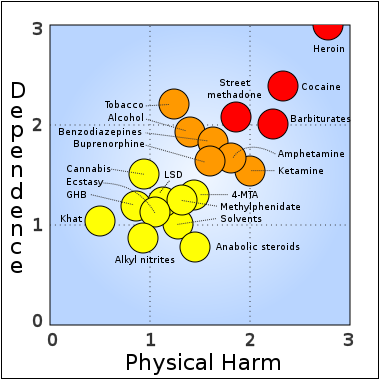 A rational scale to assess the harm of drugs. Data source is the March 24, 2007 article: Nutt, David, Leslie A King, William Saulsbury, Colin Blakemore. "Development of a rational scale to assess the harm of drugs of potential misuse" The Lancet 2007; 369:1047-1053. (PMID 17382831; doi:10.1016/S0140-6736(07)60464-4) The data was first reported in appendix 14 of "Drug classification: making a hash of it?"
A rational scale to assess the harm of drugs. Data source is the March 24, 2007 article: Nutt, David, Leslie A King, William Saulsbury, Colin Blakemore. "Development of a rational scale to assess the harm of drugs of potential misuse" The Lancet 2007; 369:1047-1053. (PMID 17382831; doi:10.1016/S0140-6736(07)60464-4) The data was first reported in appendix 14 of "Drug classification: making a hash of it?"
Thursday, September 30, 2010
Ecological responses to climate change in eastern forests
http://www.nrs.fs.fed.us/atlas
Naturopathic metabolic typing
- Electrolyte balance: Thomas M. Riddick "Control of colloid stability through zeta potential"
- Anabolic/catabolic: Dr Emanuel Revici “Research in Pathophysiology as the Basis for Guided Chemotherapy with Special Emphasis on Cancer
- Glucogenic-ketogenic: George Watson "Nutrition and your mind: the psychochemical response"
- Autonomic nervous system: Dr Francis Pottenger and Dr. Lowe
- Acid-base balance Dr Guy Schenker



Saturday, August 07, 2010
Fires in Borneo track El Nino


In the year 2000, about 36.8Mha of Kaliman-
tan were under timber concession licenses. Production
and conversion forests were generally more affected
than the limited production forests and also showed
much higher impacts during El Nin ˜o years with 10.0%
and 10.6%, respectively, in comparison with 2.8% for the
limited production forests. While 67.6% of the area of
Kalimantan is timber concession, about 77.4% of the
total fire-affected area over the whole period was
located in these concessions. This number rose to
80.9% in El Nin ˜o years.
LANGNER, ANDREAS; SIEGERT, FLORIAN Spatiotemporal fire occurrence in Borneo over a period of 10 years. Global Change Biology. 2009.
Monday, July 26, 2010
Sunday, July 04, 2010
How efficient are plants? (part II)

On sunny days, about 1 kilowatt of solar radiation bathes every square meter of the earth's surface every hour. Because of the seasons and weather, the annual average for much of the united states is between 1/2 and 1/3 of this ideal "clear sky" condition.
Ship Pollution

Friday, July 02, 2010
Do Trees Pollute?

Plants produce VOCs as part of normal respiration. These, along with anthropogenic VOCs can produce ozone smog in the lower atmosphere.
In the South, pine plantations used for their fast-growing supplies of timber have proven to be havens for sweetgum trees, which are major producers of VOCs. Indeed, virtually every tree that grows fast -- a desirable quality for forestry production -- is a heavy emitter of VOCs.
"It's just one of those biological correlations," said Purves. "What you want is a fast-growing tree that doesn't produce a lot of VOCs, but that doesn't seem to exist."
http://www.princeton.edu/pr/news/04/q3/0927-trees.htm
The debate continues: "... trees were reported to contribute to ozone formation. This misleading fact contains only part of the truth. Most trees do emit biogenic VOCs such as isoprene and monoterpenes which can contribute to the formation of ozone and carbon monoxide. The other side of this story is that in areas with low nitrogen oxide concentrations, such as more rural areas, VOCs are believed to remove ozone. Additionally, since trees lower air temperature, the net effect of increased trees in urban areas is an overall lowering of VOC emissions and therefore ozone formation.
Trees in urban areas require energy inputs for planting, maintaining and removing. Because we burn fossil fuels (which emit CO2, SO2, N, CO and VOCs) in all these activities, we also need to factor that into the Trees + Air equation. In this case, it tips the scale a bit to the net loss side… but not for long!"
http://ecology.com/features/trees-air-quality/trees-clean-air.html
Wednesday, June 23, 2010
How efficient are plants? (part I)

In order to answer how efficient plants are at converting solar energy into chemical energy, we can look at how much energy is in sunlight and how it is used in photosynthesis.
| Estimated Net Productivity of Certain Ecosystems (in kilocalories/m2/year) | |
|---|---|
| Temperate deciduous forest | 5,000 |
| Tropical rain forest | 15,000 |
| Tall-grass prairie | 2,000 |
| Desert | 500 |
| Coastal marsh | 12,000 |
| Ocean close to shore | 2,500 |
| Open ocean | 800 |
| Clear (oligotrophic) lake | 800 |
| Lake in advanced state of eutrophication | 2,400 |
| Silver Springs, Florida | 8,800 |
| Field of alfalfa (lucerne) | 15,000 |
| Corn (maize) field, U.S. | 4,500 |
| Rice paddies, Japan | 5,500 |
| Lawn, Washington, D.C. | 6,800 |
| Sugar cane, Hawaii | 25,000 |
sources: http://users.rcn.com/jkimball.ma.ultranet/BiologyPages/N/NetProductivity.html
note: these estimated values are different, though of the same magnitude, from other sources.
 |
| A map of which input is most limiting across terrestrial biomes: temperature, sunlight, or water. |
Monday, June 21, 2010
Tropical Agroecosystems
What tropical countries so rarely grasp is the fact that agriculture in the temperate zone countries evolved (and is still evolving) from short-term exploitation to sustained-yield agriculture while operating off a much larger natural capital than the tropical countries possess.
...social rather than technological environment is at fault...(because of side-by-side comparisons)
The plea for technological advance gives the scientific community a perfect excuse to continue their reductionist and esoteric approaches rather than to put their efforts into the far more frustrating task of generating sustained-yield tropical agroecosystems...
...tropical people are no more interested in spending all their waking hours picking beetles of bean bushes and transplanting rice by hand than they are. High-yield tropical agriculture requires immense amounts of very accurate hand care or tremendous amounts of fossil fuel, or both...
Most of the lowland tropics would be classified as marginal farmland...there is no biological reason that the capacity to support human life should be evenly distributed over the earth's surface, nor why is should be correlated with the primary productivity of natural ecosystems or with the biomass (standing crop) of these ecosystems.
If one wishes a high yield from a particular site, year-0round warmth necessitates complex fallow systems to deal with the weeds and insects. However, it is possible that over large areas, a much lower yield per acre in fields under continuous cultivation could produce the same average yield per acre as fallow systems.
The complex biological systems of the tropical lowlands are very easily perturbed and cannot be easily reconstituted from roadside and woodlot plants and animals, as could many North American habitats.
A great variety of horticultural practices and strains of common tropical food plants have accumulated over the centuries. They are closely adjusted to local farming conditions and coevolved with the other dietary resources of the area. When high-yield hybrids are introduced, the local strains and practices are quickly abandoned. This later lead to (i) expensive and complex programs to reevolve these strains when adjusting hybrid monocultures to sustained yield tropical agriculture, (ii) increased dependence on pesticides and complex breeding programs to keep abreast of the pest problem in single-strain monocultures, and (iii) increased imbalance in the distribution of wealth among farmers.
Tropical insects appear to develop resistance to pesticides much quicker than temperate insects.
Argues that population has increased as a result of increased cash cropping, which rewards larger families and eliminates the feedback associated with subsistence agriculture.
Well-meaning persons are constantly injecting fragments of temperate zone agricultural technology into the tropics without realizing that much of the value of these fragments is intrinsic not to the technology, but rather to the society in which that technology evolved...That the tropical country "cannot resist" these gratuities is hardly justification for giving them. [as a consequence of "development"] the land deteriorates, deserts spread or become more barren, and a greater number of people end up worse off than they were before development of the area took place.
When an experiment station is centered around a major food crop, such as rice or maize, the goal becomes one of maximizing production per acre rather than per unit of resource spent...
Wednesday, June 16, 2010
Tuesday, June 15, 2010
Bus vs. Light Rail
"Let's start with honesty:
Supporters of public transit must be willing to share some simple truths that folks don't want to hear. One is this -- Paint is cheap, rails systems are extremely expensive.
Yes, transit riders often want to go by rail. But it turns out you can entice even diehard rail riders onto a bus, if you call it a "special" bus and just paint it a different color than the rest of the fleet.
Once you've got special buses, it turns out that busways are cheap. Take that paint can and paint a designated bus lane on the street system. Throw in signal preemption, and you can move a lot of people at very little cost compared to rail.
A little honesty about the differences between bus and rail can have some profound effects..."...
"If you can't afford your current footprint, does expanding that underfunded footprint really advance the President's goals for cutting oil use and greenhouse gases? Does it really advance our economic goals in any sustainable way?"
Thursday, June 10, 2010
Top-Down or Bottom-Up?
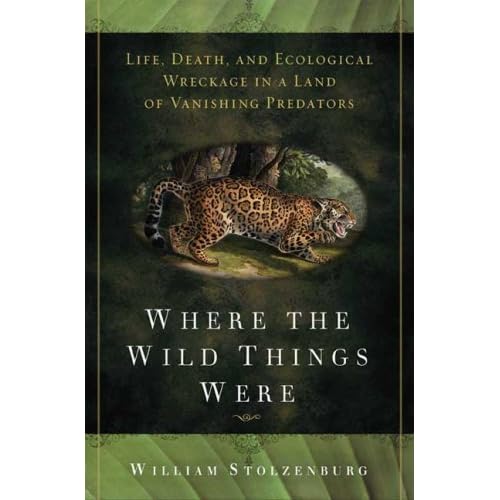
A number of science controversies surrounding trophic cascades are well-presented in William Stolzenburg's book, "Where the Wild Things Were: Life Death, and Ecological Wreckage in a Land of Vanishing Predators". 2008. The book deals with the 20th century history of population ecology and the struggle to understand whether populations of animals and plants are controlled from the top by large predators or from the bottom by primary productivity. From Elton's realization of the pyramid of biomass on Spitzbergen to Hairston, Smith, and Slobodkin's Green World Hypothesis, to Paine's experimental verification of top-down control in starfish and mussel systems, the book covers the origin and development of such key concepts in ecology and conservation as keystone species and trophic cascades.
In addition to covering classic work such as Paine's starfish and mussel studies, the book also delves into controversies over killer whales and sea otter populations. While the latter are controversial because the results are relatively new, other controversies such as those over the rise and collapse of deer herds on the Kaibab plateau after the removal of top predators are controversial because the data are so old.
I wish the book had covered more of the controversy surrounding the Yellowstone wolves-grazing story in Wicker 2003 . The classic story of the wolves restoring Yellowstone's ecosystem to equilibrium should be interrogated because of differing interpretations of top-down (predator controlled) or bottom-up (hydrology-controlled) factors. For example, Wolf, Cooper, and Hobbs (2007) call much of Wicker's simplistic assumptions into question. And Meyer and Persico (2009) question Wolf, Cooper, and Hobbs' climate assumptions for the Holocene. The latter are both good papers, coming from different paradigms, all illustrating some of the difficulties for assigning "cause" and "effect" in dynamic and contingently evolving ecosystems.
Stolzenburg writes that "while the fall of the great terrestrial predators can be summed up as a casualty of the agricultural age, the subsequent collapse of their marine counterparts owes itself to the coming of the technological age." The work concludes with an excellent analysis of the conservation biology idea of linked conservation reserves, and the human opposition to acceptance of large wild animals. In the end, whatever the ecological story, the human social story will always get the last word.





